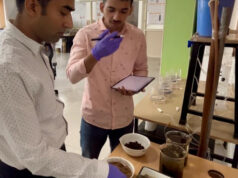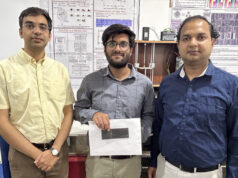Mandi: Indian Institute of Technology Mandir researchers have discovered an important biomolecular mechanism for the formation of protein clusters that are often seen in Alzheimer’s disease.
IIT team led by Dr Rajanish Giri has shown that signal peptide of the Amyloid Precursor Protein (APP) can co-aggregate with Amyloid beta-peptide (Aβ42). This Aβ42, known for the pathogenesis of Alzheimer’s disease, is a most common form of dementia that slowly destroys memory and other important mental functions.
While proteins are essential for virtually every process within the cell, their disturbed functions due to aggregation and/or misfolding can result in harmful effects. There are more than 50 diseases that are associated with protein aggregation/misfolding. Alzheimer’s disease, for example, is linked with the deposition of misfolded peptides called amyloid β42 (Aβ42) in the spaces between nerve cells. Aβ42 is a peptide derived from full-length protein Amyloid Precursor Protein (APP).
Generally, when proteins get aggregated or misfolded, they deposit around the cells and kill them, leading to the onset of many diseases. Till now, it was unknown whether signal peptide of amyloid precursor protein also has the tendency to form disease-causing aggregates? Can signal peptide co-assemble with the Alzheimer’s disease-related peptide (Aβ42)? To answer such questions, we performed this work says Dr Giri and further added
“In Amyloid precursor protein, so far only Aβ region was known to form toxic aggregates. Here, we discovered that the Signal peptide of Amyloid precursor protein not only forms cell-killing aggregates but also enhances the aggregation of Aβ42 peptide, under in-vitro conditions.”
The research team performed experiments on the APP1–17SP using dye-based assays and found that APP1–17SP can bind to these aggregate-tracking dyes. Further, similar experiments of APP1–17SP with Aβ42 peptide, led to the formation of characteristic fibrillar aggregates. In fact, the Aβ42-APP1–17SP mixture displayed higher cytotoxicity compared with Aβ42 and APP1–17SP separately.
“This is the first report on an aggregation of signal peptides in isolation,” said Dr Giri on the significance of their work. “Our study shows a possible link between signal peptide aggregation and Alzheimer’s Aβ42 peptide aggregation,” he added.
“This study will help in future research that could provide the relation of other signal peptides to disease pathogenesis,” said Dr Giri.















